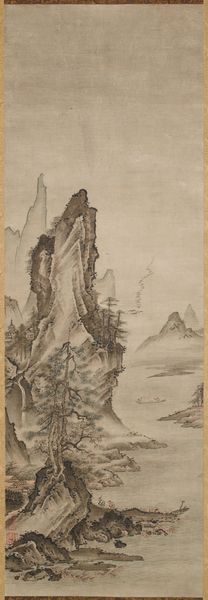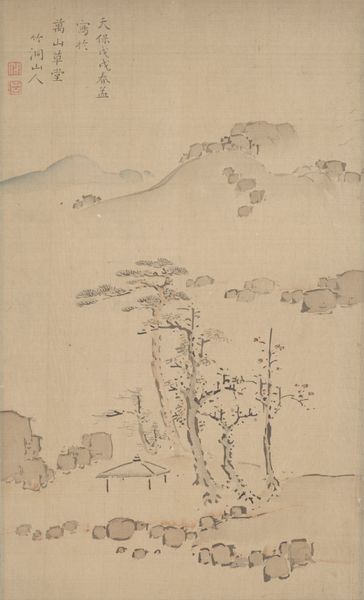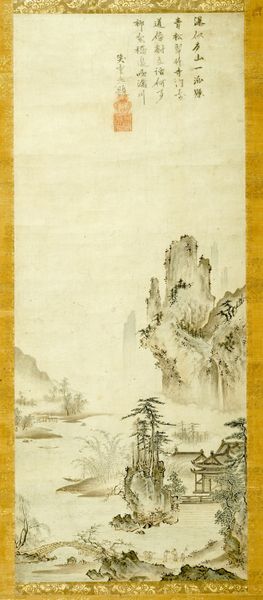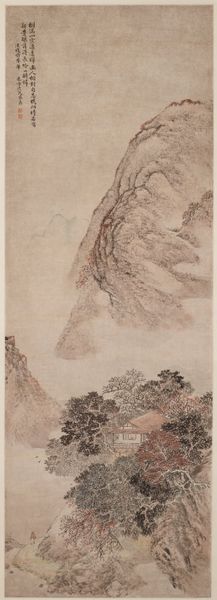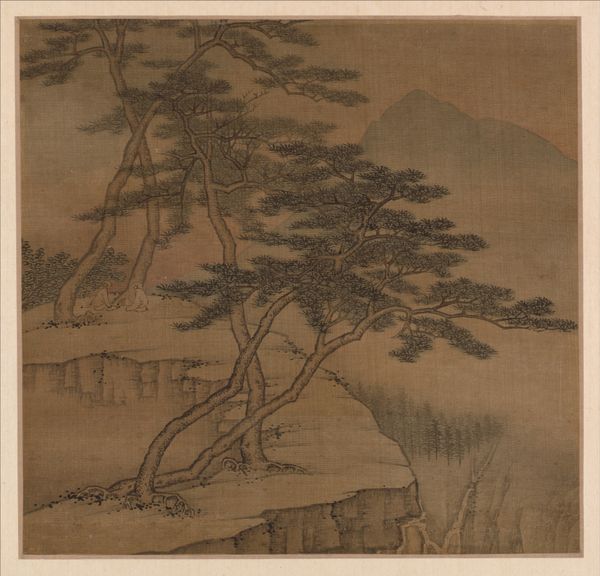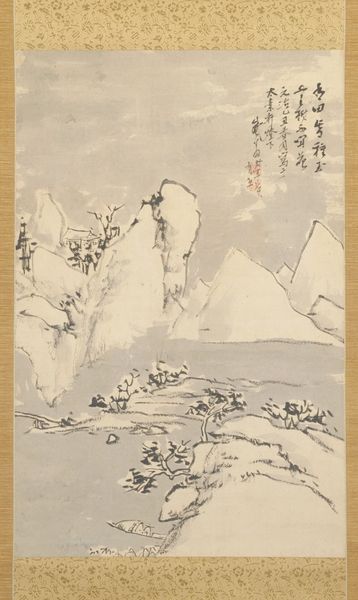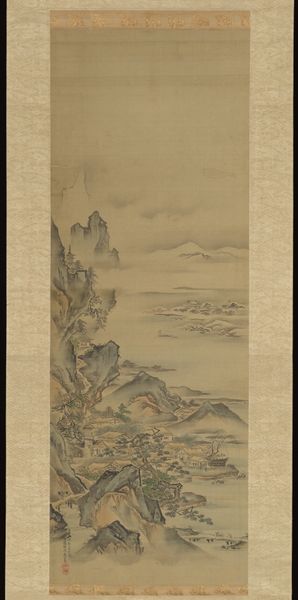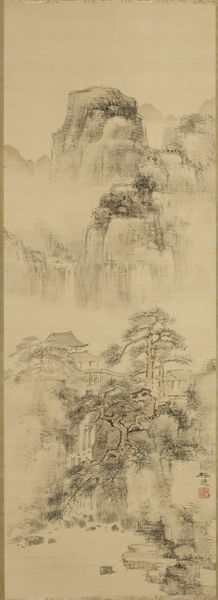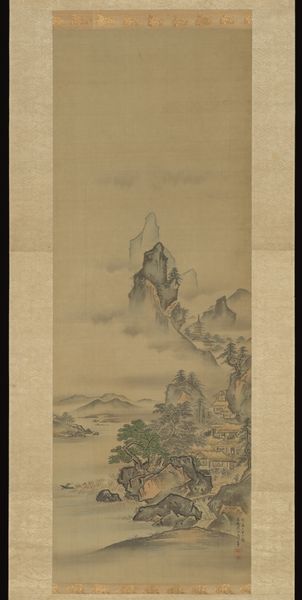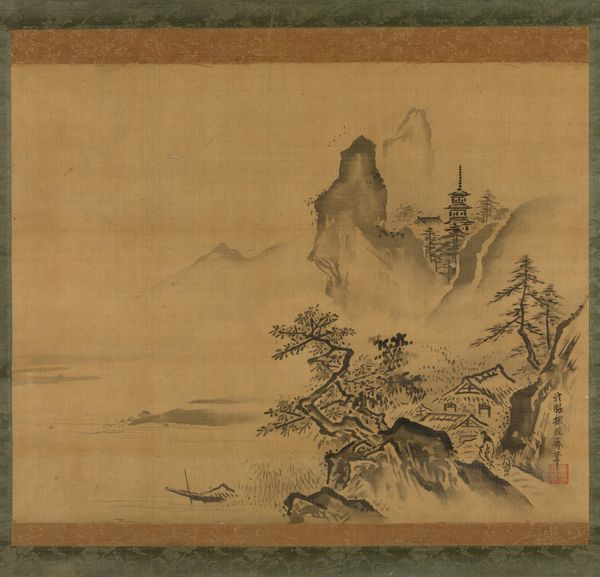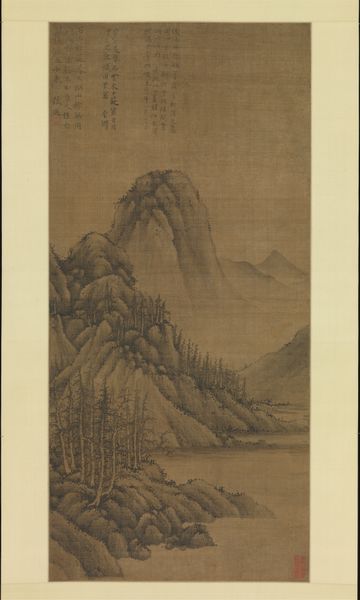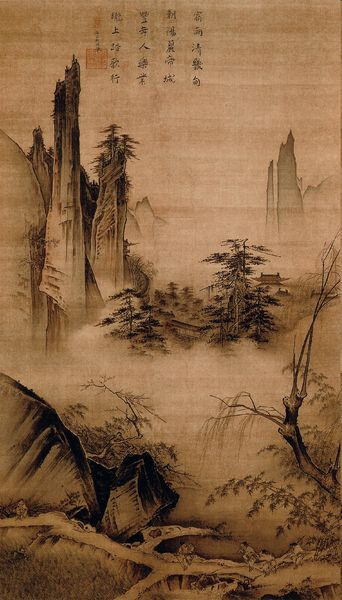![Landscape [right of a triptych of White-Robed Kannon with Landscapes] by Kenkō Shōkei](/_next/image?url=https%3A%2F%2Fd2w8kbdekdi1gv.cloudfront.net%2FeyJidWNrZXQiOiAiYXJ0ZXJhLWltYWdlcy1idWNrZXQiLCAia2V5IjogImFydHdvcmtzLzBkZDllNmFhLWZjNjMtNGU1Yi1hZWYzLTljYjQyMjkzNTI5ZC8wZGQ5ZTZhYS1mYzYzLTRlNWItYWVmMy05Y2I0MjI5MzUyOWRfZnVsbC5qcGciLCAiZWRpdHMiOiB7InJlc2l6ZSI6IHsid2lkdGgiOiAxOTIwLCAiaGVpZ2h0IjogMTkyMCwgImZpdCI6ICJpbnNpZGUifX19&w=3840&q=75)
Landscape [right of a triptych of White-Robed Kannon with Landscapes] c. late 15th century
0:00
0:00
drawing, paper, ink
#
drawing
#
ink painting
#
asian-art
#
landscape
#
paper
#
ink
#
line
#
yamato-e
Dimensions: 38 5/16 × 12 7/8 in. (97.31 × 32.7 cm) (image)70 1/4 × 17 3/16 in. (178.44 × 43.66 cm) (without rollers)
Copyright: Public Domain
Kenkō Shōkei made this ink landscape on silk sometime in the late fifteenth or early sixteenth century. Ink painting is a supremely skilled tradition, often taken up by scholar-artists. The goal isn't to represent the external world exactly, but to capture an inner vision, a feeling. Kenkō Shōkei’s sweeping brushstrokes and the translucent washes of ink create a scene that feels both detailed and dreamlike. What I find interesting here is that the apparent spontaneity is deceptive. Ink painting demands absolute control; each stroke must be placed perfectly, with no room for correction. This reflects a deep engagement with materials and process – the way the ink bleeds into the silk, the pressure of the brush, the artist's breath as they work. When you look at the landscape, consider the labor and the expertise required to bring it into being. It bridges the divide between craft and fine art.
Comments
minneapolisinstituteofart almost 2 years ago
⋮
Buddhist monks, particularly those of the Zen school, were devoted landscape painters. Like calligraphy, painting was considered part of the spiritual training necessary for enlightenment. Zen monks favored monochrome ink painting due to its simplicity and straightforwardness. The priest Kenkō Shōkei, who served as secretary at Kenchōji Temple in Kamakura, studied Chinese paintings from the Song (960-1279) and Yuan (1279-1368) dynasties and became a key figure in the ink-painting circles of Japan
Join the conversation
Join millions of artists and users on Artera today and experience the ultimate creative platform.
